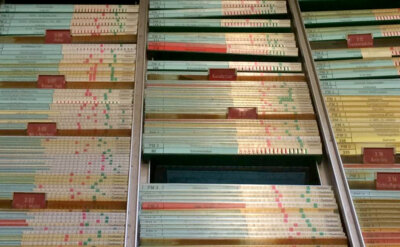Munksjö Unterkochen GmbH – Time saving thanks to [sip]
From the Middle Ages to the 21st Century

The paper mill (or paper factory) of the globally operating Munksjö AB, which was founded in Unterkochen as early as 1613, has been relying on [sip] since 2014. The focus of production at the mill in the "Kochertal" on the edge of the Swabian Alb is on the manufacture of decor paper using paper machines with an annual capacity of around 76,000 tons.
This case study is a good illustration of the fact that any manufacturing company, regardless of its level of organizational structure, can use [sip] to quickly get started with digitized maintenance.

Operating orders before the introduction of [sip]
In a tried and tested manner, maintenance tasks in Unterkochen were still carried out in handwritten form as an operating order on these slips of paper until 2014.
In the course of the introduction of [sip], the associated data fields were completely defined and transferred accordingly. As a result of the digital recording of all orders, projects in [sip] allow maintenance work to be planned and carried out much more clearly during downtimes.

Preventive measures with the card index box
Before the introduction of [sip], a really impressive card index system for outside observers was used for the coordination of maintenance work in the maintenance department.
Dynamic due date control now takes place in [sip] using individually parameterizable maintenance actions. In addition to the classic data fields, the familiar service intervals, material requirements and the tools required for the work were also transferred. A paper-based logbook thus became a digitized one "in no time at all". Weekly work is processed in a clear and uncomplicated manner in list orders.

Activity planning
The term is the same. The expression is noticeably different.
Where scheduling now takes place on the screen in [sip], workers were once supplied with orders via the literal planning board on the wall, as was common in many traditional plants.
The drag&drop disposition of due maintenance jobs in [sip]’s graphical planning board finally elegantly resolves the natural contradiction between maintenance and planning.

With the help of [sip], we were able to move our maintenance from the Middle Ages into the 21st century. The entire process has been significantly simplified with the help of [sip] and is now much more efficient.
Achievements through [sip]
- All orders visible to everyone
- No more lost or forgotten orders
- Simple and fast planning of preventive maintenance
- Simple downtime planning
- Quick overview of used objects and reserve objects
- Easy overview of events at the object and in the logbook of the assembly tree